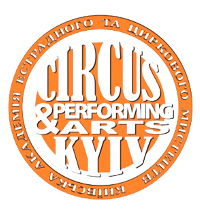DERIVATIVE WORKS IN CHOREOGRAPHIC ART: INSPIRATION OR PLAGIARISM?
Abstract
Creation of choreographic works is a multifaceted process in which the main sources of success are the skills of the choreographer, the ability of the performer and inspiration, that is needed to get the desired result. In this process, it is important to feel the edge so that your own product, inspired by certain works, will not become a copy or a derivative work that will show signs of copying or plagiarism. It is then that the question of dishonest borrowing and copyright infringement in the field of choreographic art arises. Stages of competitions and festivals in choreographic art are increasingly replete with productions having signs of plagiarism and increasingly raise the issue of misappropriation or copying of other people's choreographic works without the permission of the author. Internet platforms are filled with a huge number of interesting productions that make you want to create something similar, so when you watch them, there is often a process of imitation, copying, borrowing certain parts of the composition, and sometimes the whole compositional structure. Productions from television projects, which are known not only in Ukraine but also abroad, are often copied. Cases of plagiarism in choreography are recorded not only in Ukraine but also abroad, which determines the relevance of this issue at the international level. Such actions in the professional sphere not only lead to increased attention to the problem of plagiarism, but also require a specific algorithm of actions to combat such acts.
The article is dedicated to the problems of plagiarism in choreography. The work outlines the causal consequences of using someone else's choreographic material, its partial compilation or full copying, which in turn leads to copyright infringement and the appropriation of other people’s works, presenting them as their own. The signs of plagiarism and derivative works in choreography are determined on the example of some components of dance, or methods of compositional solution. Attention is focused on examples of appropriation, facts of plagiarism and the use of someone else's choreographic work or its component without the consent of the author in the context of competitive and festival activities in Ukraine.
References
1. Закон України № 3792-XI.
URL: https://ips.ligazakon.net/document/TM005263
2. Закон України Про авторське право і суміжні права. Розділ V. Стаття 50.
URL: http://www.intellect.ua/ukr/copyright/law/laws/copyright/V/50
3. Кривенко М. До питання захисту авторських прав на музичні твори в мережі інтернет. Национальный юридический журнал: теория и практика. 2017. Сс. 90-92.
4. Міщенко М. Плагіат як невід’ємна складова залучення людини до екранного простору. Культурологічна думка. 2018. № 13. Сс. 132-137.
5. Поліщук І. Сучасний стан наукового дослідження підробок та піратства творів мистецтва. Український мистецтвознавчий дискурс: колективна монографія. НАКККІМ. Рига: Izdevniecība «Baltija Publishing». 2020. Сс. 278-291.
6. Петренко І. Питання виявлення плагіату літературного твору. Теорія і практика інтелектуальної власності. 2009. Вип. 4. Сс. 11-17.
7. Токарева В. Сумлінне використання та похідні твори у сучасному мистецтві. Цивільне право і цивільний процес; сімейне право; міжнародне приватне право. — Т. 31 (70), ч. 1, № 2. 2020. С. 121.
8. Шишкарьова К.
URL: https://totemdancegroup.com.ua/kristina-shishkareva-plagiat-stal-ochen-obychnym-yavleniem-v-srede-xoreografii-26-06-12/
References:
1. Zakon Ukrajiny № 3792-XI [Law of Ukraine № 3792-XI] Available at: https://ips.ligazakon.net/document/TM005263 [in Ukrainian]
2. Zakon Ukrajiny Pro avtors’ke pravo i sumizhni prava. Rozdil V. Stattja 50
[Law of Ukraine on Copyright and Related Rights. Part V. Article 50]
URL: http://www.intellect.ua/ukr/copyright/law/laws/copyright/V/50 [in Ukrainian]
3. Kryvenko, M. (2017). Do pytannja zahystu avtors’kyh prav na muzychni tvory v merezhi internet [On the protection of copyright of musical works in the Internet]. Natsional'nyy yuridicheskiy zhurnal: teoriya i praktika. 2017, 90-92 [in Ukrainian]
9. 4. Mischenko, M. (2018). Plagiat jak nevid’jemna skladova zaluchennja ljudyny do ekrannogo prostoru. [Plagiarism as an integral part of human involvement in the screen space] Kul’turologichna dumka, 13, 132-137 [in Ukrainian]
5. Polischuk, I. (2020). Suchasnyj stan naukovogo doslidzhennja pidrobok ta piratstva tvoriv mystectva. Ukrajins’kyj mystectvoznavchyj dyskurs: kolektyvna monografija. NAKKKIM. — Ryga: Izdevniecība “Baltija Publishing” [The current state of scientific research of counterfeits and piracy of works of art. Ukrainian art criticism discourse: a collective monograph], 278-291 [in Ukrainian]
6. Petrenko, I. (2009). Pytannja vyjavlennja plagiatu literaturnogo tvoru. Teorija i praktyka intelektual’noji vlasnosti [The issue of detecting plagiarism of a literary work], 4, 11-17 [in Ukrainian]
7. Tokareva, V. (2020). Sumlinne vykorystannja ta pohidni tvory u suchasnomu mystectvi. Cyvil’ne pravo i cyvil’nyj proces; simejne pravo; mizhnarodne pryvatne parvo [Conscientious use and derivative works in contemporary art. Civil law and civil proceedings; family law; international private law], 2, 121 [in Ukrainian]
8. Shyshkarova, K. Available at: https://totemdancegroup.com.ua/kristina-shishkareva-plagiat-stal-ochen-obychnym-yavleniem-v-srede-xoreografii-26-06-12/
[in Russian]

 ISSN
ISSN  ISSN
ISSN 



